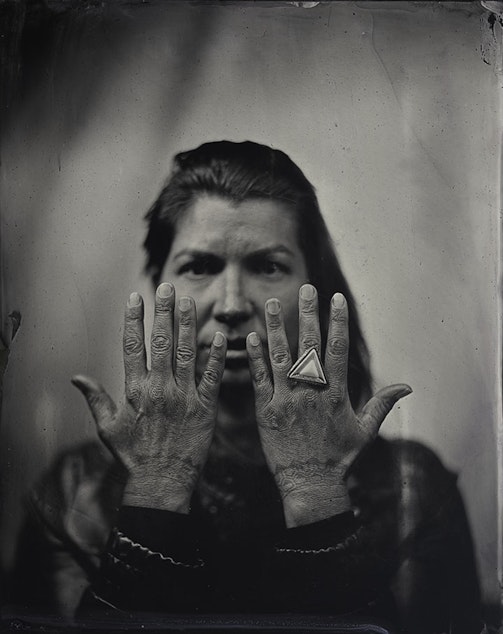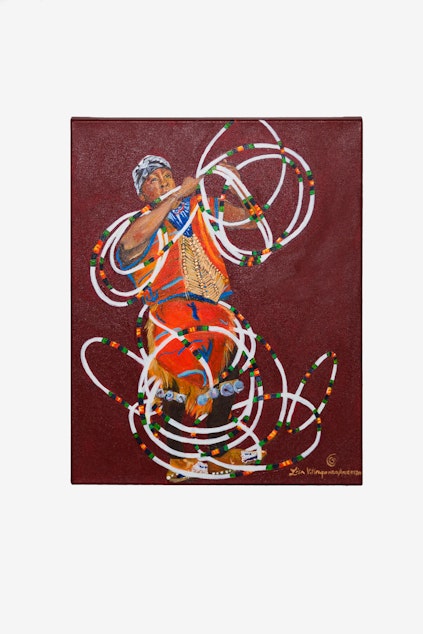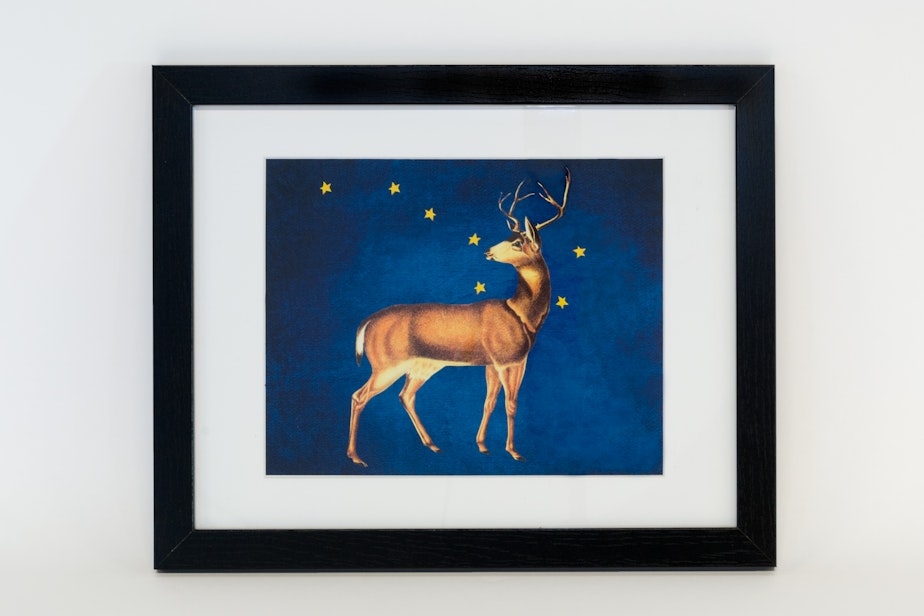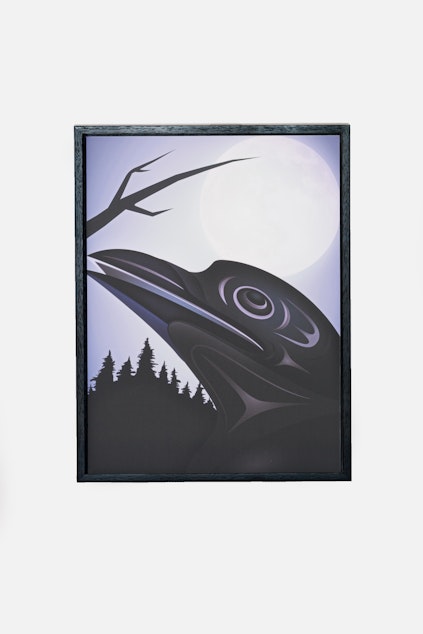Indigenous artists lift the sky at a new Seattle gallery
Seattle’s historic King Street Station is the place to catch an Amtrak train to Portland or Vancouver. Starting this month, it’s also the city of Seattle’s official center for arts and cultural activities.
ARTS at King Street Station is a newly-renovated office and arts space, located on the third floor of the century-old railway station. The 7,500-square-foot space houses Seattle’s Office of Arts and Culture (OAC) as well as meeting rooms, a public lobby and a gallery dedicated to presenting art of all kinds, with an emphasis on work that emerges from communities of color. That priority dovetails with the OAC’s primary mission to promote racial and social equity.
The inaugural exhibition is called yəhaw̓, inspired by a Coast Salish story that tells of Indigenous people from all tribes uniting around a common cause and lifting up the sky together.

“It is fitting that we inaugurate the space by paying homage to the incredible artistry of the Indigenous people on whose land the City of Seattle is built,” said Randy Engstrom, director of the Office of Arts and Culture in a prepared release.
Sponsored
The grand opening begins at noon on Saturday, March 23. The event is free and open to the public.
Co-curators Tracy Rector, Asia Tail and Satpreet Kahlon envisioned not simply a show featuring Indigenous creatives; they wanted to bend the curatorial model itself.
“When you have a space that is self-proclaimed to be prioritizing marginalized communities,” asks Kahlon, “how do you extend the opportunity to go beyond the four walls?”

Sponsored
Traditionally, curators hand-pick artists to participate in an exhibition. For yəhaw̓, the three women put out an open call to all Indigenous creatives in the region. They were asked to respond to the theme of lifting up the sky. Nobody was turned away; newer artists were provided with mentors to help them realize their proposals, and every participant will receive a stipend at the end of the show.
Rector, a member of the Seattle Arts Commission as well as an award-winning artist herself, says the process was rewarding but also labor-intensive.
“We went out into the community, we invited the community in,” Rector explains. “We sat with people, we helped them with their applications.”

Sponsored
They also paid each participant a small stipend, and provided artist mentors for those who needed help realizing their proposals.
The resulting exhibition includes myriad media and artistic styles, from traditional weaving to videos to a large-scale installation by Timothy White Eagle that greets gallery visitors.
Co-curator Asia Tail describes it as a sacred/secular meditation space. “It’s a large circular platform draped in ball-chain," she says. "You can walk the circle around a stone that Timothy has placed in the center.”

Sponsored
Beyond White Eagle’s circular platform, visitors will see an enormous, colorful rendition of Sasquatch made up upcycled plastic, paintings and photographs displayed on movable white walls, and assorted three-dimensional artworks.
Yəhaw̓ is three years in the making. Co-curator Asia Tail developed the idea before she knew about ARTS at King Street Station. She contacted Kahlon and Rector to enlist their help, and the three women set about raising the money they needed to make the show a reality.
The exhibition not only inaugurates the new cultural space at the train station; it also kicks off a year-long, city-wide celebration of Indigenous arts, culture and design. A calendar is available at yehawshow.com.




